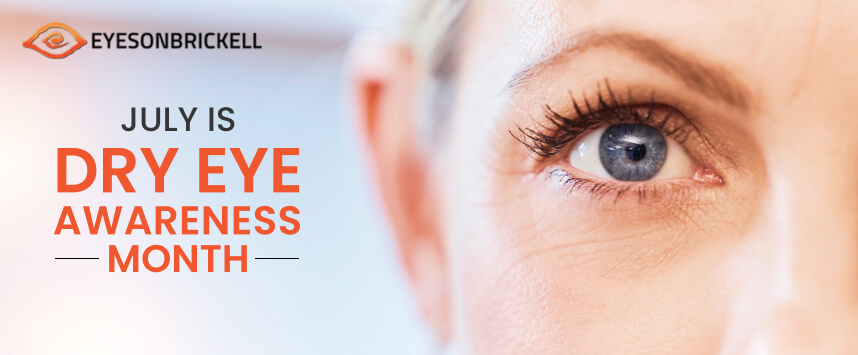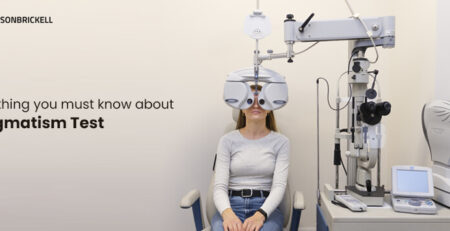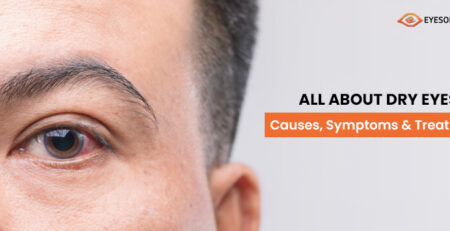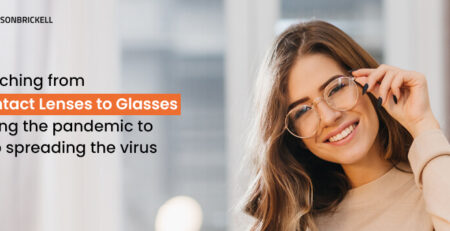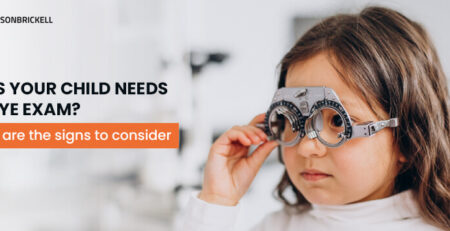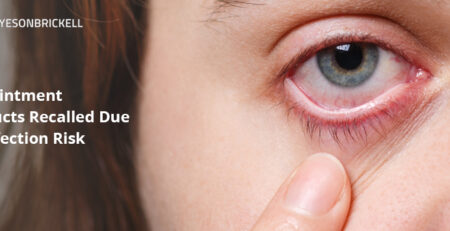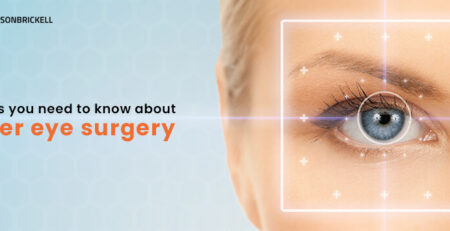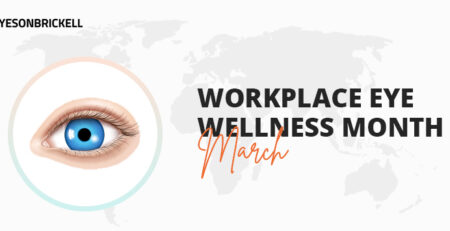July is Dry Eye Awareness Month- Everything You Need To Know
Dry, itchy, burning, blurry… Does that sound familiar?
If these words resonate with you, you might be among the millions of people suffering from Dry Eye Disease. It’s a daily struggle that can make even the simplest tasks feel unbearable.
We all understand the importance of staying hydrated. We’re constantly reminded to drink six to eight glasses of water each day. We carry our water bottles everywhere, ensuring we’re always replenishing our bodies. But what about our eyes? Why don’t we prioritize their hydration with the same urgency?
Our eyes need lubrication, not just to feel comfortable but also to function correctly. When they’re dry, it impacts our vision and our overall quality of life.
July is Dry Eye Awareness Month, a crucial time to shine a light on this often overlooked condition. If you’re one of the people grappling with dry eyes, it’s essential to learn how to manage it effectively.
Let’s make a pact this month to give our eyes the care they deserve.
Before going further, let’s understand what Dry Eye Disease truly is to help you take the first steps towards effective management.
What is Dry Eye Disease?
Dry Eye Disease is a common condition where your eyes don’t produce enough tears, or the tears evaporate too quickly. This leads to a lack of proper lubrication, causing discomfort and potentially affecting your vision.
Recognizing Dry Eye Symptoms
The first step in addressing Dry Eye Disease is recognizing its symptoms. Dry eye symptoms can vary from person to person but often include:
- Burning or stinging sensation
- Feeling of grittiness or foreign object in the eye
- Redness
- Blurry vision that improves with blinking
- Light sensitivity
- Watery eyes (ironically, as the eye tries to compensate)
- Difficulty wearing contact lenses
- Eye fatigue
If you’re experiencing any of these symptoms regularly, it’s essential to consult an eye care professional for a proper diagnosis.
Who’s at Risk for Dry Eye Disease?
While anyone can develop Dry Eye Disease, certain factors increase your risk:
- Age: The condition becomes more common as we get older
- Gender: Women are more likely to develop dry eyes, especially after menopause
- Screen time: Prolonged use of digital devices reduces blink rate
- Contact lens wearers
- Environmental factors: Windy, dry, or smoky conditions
- Certain medications: Antihistamines, antidepressants, and blood pressure medications can contribute to dry eyes
- Medical conditions: Autoimmune diseases like Sjögren’s syndrome, rheumatoid arthritis, and lupus
Understanding Your Tear Film
To grasp how Dry Eye Disease develops, it’s crucial to understand the structure of your tear film. It consists of three layers:
- Lipid (oil) layer: The outermost layer that prevents tear evaporation
- Aqueous (water) layer: The middle layer that keeps the eye hydrated
- Mucin layer: The innermost layer that helps tears stick to the eye surface When any of these layers are compromised, it can lead to Dry Eye Disease.
Types of Dry Eye Disease
Here are two types of Dry Eye Disease:
Aqueous-Deficient Dry Eye: The lacrimal glands don’t produce enough of the water layer of tears
Evaporative Dry Eye (Meibomian Gland Dysfunction): The oil-producing glands are clogged or don’t function properly, causing tears to evaporate too quickly
Understanding which type you have is crucial for effective treatment.
The Impact of Dry Eye Disease on Daily Life
Dry Eye Disease can significantly affect your quality of life. It can make simple tasks like reading, driving, or working on a computer challenging and uncomfortable. In severe cases, it can lead to eye infections and damage to the eye’s surface. That’s why early detection and dry eye treatment are essential.
Diagnosing Dry Eye Disease
If you suspect you have Dry Eye Disease, your eye care professional will perform a comprehensive eye exam. This may include:
- A detailed history of your symptoms and overall health
- Examination of your eye’s surface
- Measuring your tear production and quality
- Evaluating your blink rate and completeness
These tests help determine the type and severity of your condition, guiding the treatment plan.
Dry Eye Treatment Options
Dry eye treatment varies depending on the cause and severity of your condition. Here are some common approaches:
Over-the-Counter Solutions
- Artificial Tears: These lubricating eye drops can provide temporary relief for mild cases
- Gel Drops or Ointments: These provide longer-lasting lubrication, especially useful at night
- Eyelid Cleansers: Help maintain lid hygiene and prevent oil gland blockage
Lifestyle Changes
- Taking regular breaks during screen time (20-20-20 rule: every 20 minutes, look at something 20 feet away for 20 seconds)
- Staying hydrated
- Using a humidifier in dry environments
- Wearing wraparound sunglasses in windy conditions
- Quitting smoking and avoiding secondhand smoke
Prescription Medications
- Cyclosporine or Lifitegrast eye drops: These reduce inflammation and help increase tear production
- Steroid eye drops: For short-term use to manage inflammation
- Antibiotic eye drops or ointments: If Meibomian gland dysfunction is present
Advanced Treatments
- Punctal Plugs: Tiny silicone or gel plugs inserted into tear ducts to prevent tear drainage
- LipiFlow: A thermal pulsation system that unclogs oil glands
- Intense Pulsed Light (IPL) Therapy: Uses light pulses to stimulate oil glands
- BlephEx: A procedure that deep cleans eyelids and lashes
Nutritional Supplements
- Punctal Plugs: Tiny silicone or gel plugs inserted into tear ducts to prevent tear drainage
- LipiFlow: A thermal pulsation system that unclogs oil glands
- Intense Pulsed Light (IPL) Therapy: Uses light pulses to stimulate oil glands
- BlephEx: A procedure that deep cleans eyelids and lashes
Nutritional Supplements
Omega-3 fatty acids, found in fish oil or flaxseed oil, may help improve tear quality and reduce inflammation.
Preventing Dry Eye Disease
While not all cases of Dry Eye Disease can be prevented, you can take steps to reduce your risk:
- Practice good eye hygiene
- Protect your eyes from harsh environments
- Take regular breaks during screen time
- Stay hydrated
- Eat a balanced diet rich in omega-3 fatty acids
- Get regular eye check-ups
Conclusion
July is National Dry Eye Awareness Month, a perfect time to learn about this common condition and take steps toward managing it effectively. Don’t let dry eye disease impact your quality of life. Schedule an appointment with our Dry Eye Clinic specialist at Eyes on Brickell today. Together, we can develop a treatment plan tailored to your needs, ensuring your eyes remain healthy and comfortable.
At Eyes on Brickell, we are committed to providing exceptional eye care to the Miami community. Schedule an appointment and visit our eye care center at 1925 Brickell Ave, Suite D301, Miami, Florida, 33129 to ensure the health of your eyes.

